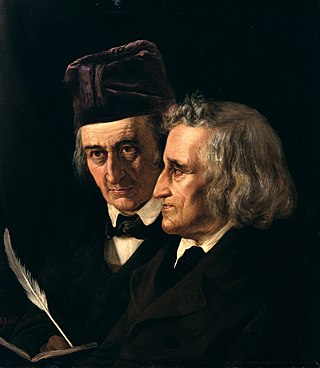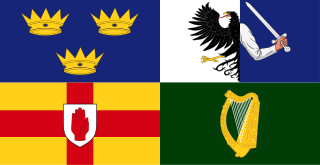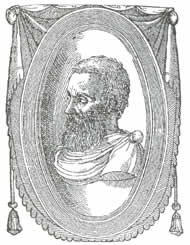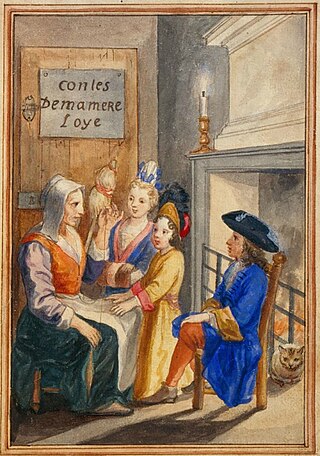Related Research Articles

The Brothers Grimm, Jacob (1785–1863) and Wilhelm (1786–1859), were German academics who together collected and published folklore. The brothers are among the best-known storytellers of folktales, popularizing stories such as "Cinderella", "The Frog Prince", "Hansel and Gretel", "Town Musicians of Bremen", "Little Red Riding Hood", "Rapunzel", "Rumpelstiltskin", "Sleeping Beauty", and "Snow White". Their first collection of folktales, Children's and Household Tales, began publication in 1812.

A fairy tale is a short story that belongs to the folklore genre. Such stories typically feature magic, enchantments, and mythical or fanciful beings. In most cultures, there is no clear line separating myth from folk or fairy tale; all these together form the literature of preliterate societies. Fairy tales may be distinguished from other folk narratives such as legends and explicit moral tales, including beast fables. Prevalent elements include dragons, dwarfs, elves, fairies, giants, gnomes, goblins, griffins, merfolk, monsters, talking animals, trolls, unicorns, witches, wizards, magic, and enchantments.

"Hansel and Gretel" is a German fairy tale collected by the Brothers Grimm and published in 1812 as part of Grimms' Fairy Tales. It is also known as Little Step Brother and Little Step Sister.

"Rapunzel" is a German fairy tale most notably recorded by the Brothers Grimm and published in 1812 as part of Children's and Household Tales. The Brothers Grimm's story was developed from the French literary fairy tale of Persinette by Charlotte-Rose de Caumont de La Force (1698), which itself is an alternative version of the Italian fairy tale Petrosinella by Giambattista Basile.

Giambattista Basile was an Italian poet, courtier, and fairy tale collector. His collections include the oldest recorded forms of many well-known European fairy tales. He is chiefly remembered for writing the collection of Neapolitan fairy tales known as Il Pentamerone.

Irish folklore refers to the folktales, balladry, music, dance and mythology of Ireland. It is the study and appreciation of how people lived.

Giovanni Francesco "Gianfrancesco" Straparola, also known as Zoan or Zuan Francesco Straparola da Caravaggio, was an Italian writer of poetry, and collector and writer of short stories. Some time during his life, he migrated from Caravaggio to Venice where he published a collection of stories in two volumes called The Facetious Nights or The Pleasant Nights. This collection includes some of the first known printed versions of fairy tales in Europe, as they are known today.
Jack David Zipes is a literary scholar and author. He is a Professor Emeritus in the Department of German, Nordic, Slavic and Dutch at the University of Minnesota.

Marie-Catherine Le Jumel de Barneville, Baroness d'Aulnoy, also known as Countess d'Aulnoy, was a French author known for her literary fairy tales. The term contes de fées has been attributed to her, but her work was called "contes DES fées" ; the term "contes DE fées" comes from Mme de Murat's first fairytale compilation: "Contes de fées", published in 1698.
The Précieuses was a 17th-century French literary style and movement. The main features of this style are the refined language of aristocratic salons, periphrases, hyperbole, and puns on the theme of gallant love. The movement was similar to the Italian marinism, Spanish culteranismo, and English euphuism.

As a literary genre, the chivalric romance is a type of prose and verse narrative that was popular in the noble courts of high medieval and early modern Europe. They were fantastic stories about marvel-filled adventures, often of a chivalric knight-errant portrayed as having heroic qualities, who goes on a quest. It developed further from the epics as time went on; in particular, "the emphasis on love and courtly manners distinguishes it from the chanson de geste and other kinds of epic, in which masculine military heroism predominates."

The Pentamerone, subtitled Lo cunto de li cunti, is a seventeenth-century Neapolitan fairy tale collection by Italian poet and courtier Giambattista Basile.
Fairytale fantasy is distinguished from other subgenres of fantasy by the works' heavy use of motifs, and often plots, from folklore.
"The Four Skillful Brothers" is a German fairy tale collected by the Brothers Grimm. It is Aarne-Thompson type 653.

The Bee and the Orange Tree is a French literary fairy tale by Madame d'Aulnoy.
Traditional stories, or stories about traditions, differ from both fiction and nonfiction in that the importance of transmitting the story's worldview is generally understood to transcend an immediate need to establish its categorization as imaginary or factual. In the academic circles of literature, religion, history, and anthropology, categories of traditional story are important terminology to identify and interpret stories more precisely. Some stories belong in multiple categories and some stories do not fit into any category.

The Facetious Nights of Straparola, also known as The Nights of Straparola, is a two-volume collection of 75 stories by Italian author and fairy-tale collector Giovanni Francesco Straparola. Modeled after Boccaccio's Decameron, it is significant as often being called the first European storybook to contain fairy-tales; it would influence later fairy-tale authors like Charles Perrault and Jacob and Wilhelm Grimm.

"Puss in Boots" is a European fairy tale about an anthropomorphic cat who uses trickery and deceit to gain power, wealth, and the hand in marriage of a princess for his penniless and low-born master.

Histoires ou contes du temps passé, avec des moralités or Contes de ma mère l'Oye is a collection of literary fairy tales written by Charles Perrault, published in Paris in 1697. The work became popular because it was written at a time when fairy tales were fashionable amongst aristocrats in Parisian literary salons. Perrault wrote the work when he retired from court as secretary to Jean-Baptiste Colbert, minister to Louis XIV of France. Colbert's death may have forced Perrault's retirement, at which point he turned to writing. Scholars have debated as to the origin of his tales and whether they are original literary fairy tales modified from commonly known stories, or based on stories written by earlier medieval writers such as Boccaccio.
References
- ↑ Tismar, Jens (1977). Kunstmärchen. Stuttgart: Metzler. doi:10.1007/978-3-476-99245-1. ISBN 978-3-476-10155-6.
- Mayer, Mathias; Tismar, Jens (2003). Kunstmärchen (4 ed.). Stuttgart/Weimar: J.B. Metzler. doi:10.1007/978-3-476-04122-7. ISBN 978-3-476-14155-2.
- ↑ Zipes (2000), p. xv.
- ↑ Lewis, C. S. (1956). Till We Have Faces: A Myth Retold . Harcourt Brace Jovanovich. p. 311. ISBN 0156904365.
Sources
- Zipes, Jack (2000). The Oxford Companion to Fairy Tales: The Western tradition from medieval to modern. New York: Oxford UP. ISBN 0-19-860115-8.
- Canepa, Nancy L. (1999). From Court to Forest: Giambattista Basile's "Lo cunto de li cunti" and the Birth of the Literary Fairy Tale. Series in Fairy-Tale Studies. Wayne State University Press. ISBN 0814327583.
- Canepa, Nancy L., ed. (1997). Out of the Woods: The Origins of the Literary Fairy Tale in Italy and France. Wayne State University Press. ISBN 0814326870.
- Lavagetto, Mario; Buia, Anna (2009). Racconti di orchi, di fate e di streghe: la fiaba letteraria in Italia [Tales of Orcs, Fairies and Witches: the Literary Fairy Tale in Italy]. I Meridiani (in Italian) (2 ed.). A. Mondadori. ISBN 978-8804573883.